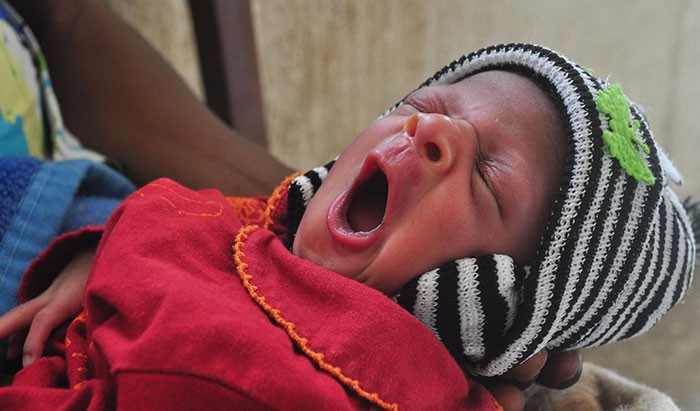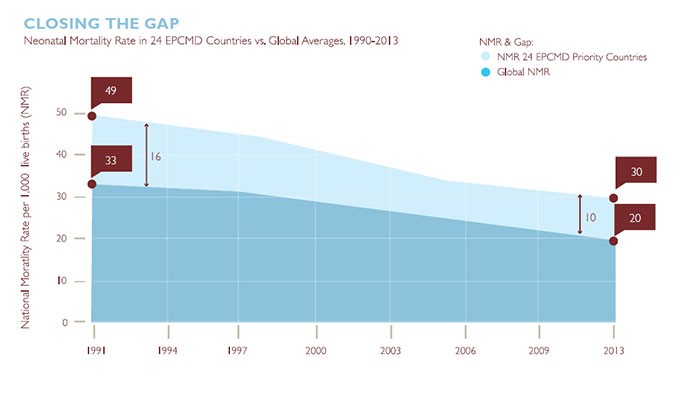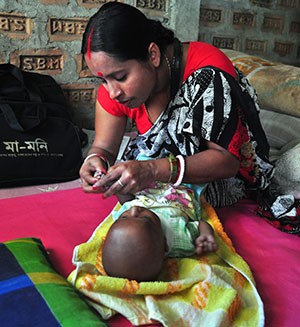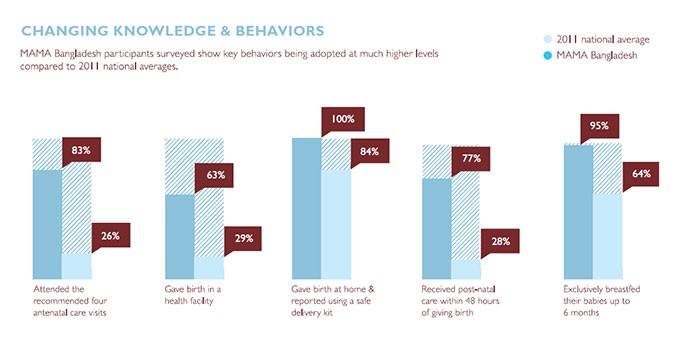- What We Do
- Agriculture and Food Security
- Democracy, Human Rights and Governance
- Economic Growth and Trade
- Education
- Ending Extreme Poverty
- Environment and Global Climate Change
- Gender Equality and Women's Empowerment
- Global Health
- Water and Sanitation
- Working in Crises and Conflict
- U.S. Global Development Lab
- CHILD HEALTH
- IMMUNIZATION
- MATERNAL HEALTH
- NEWBORN HEALTH
- WATER, SANITATION AND HYGIENE

"Reducing newborn mortality is crucial for achieving the Sustainable Development Goals. With national government commitments, evidence-based interventions, coordinated international efforts, and innovative methods of resource mobilization, we are now poised to make a difference." - Lily Kak, USAID Senior Advisor for Global Partnerships and Newborn Health
Every year, 2.8 million babies die in the first 28 days of life – nearly 1 million of them within the first 24 hours. Neonatal mortality has declined over the past 2 decades, but neonatal deaths comprise a growing proportion of under-5 deaths. Currently, newborn deaths account for 45 percent of all under-5 deaths worldwide.
Known and Preventable Causes
Of the nearly 3 million babies that die every year in the first month of life, roughly three quarters perish from diseases and complications for which there are known, cost-effective preventions and interventions. Breathing problems at birth, complications of preterm delivery, and sepsis, a bacterial infection of the blood, are all leading causes of newborn mortality, and each is preventable or treatable through currently-available interventions.
Considerable progress has been made worldwide over the past several decades. Since 1990, there has been a 47 percent decrease in neonatal mortality – though this rate of reduction lags behind the rate of decline for the post-neonatal under-5 mortality rate, which has fallen 58 percent since 1990. The neonatal mortality rate in USAID's priority countries has decreased 18.5% between 2008 and 2015.
USAID’s Response

In recent years, USAID and its partners have placed a growing emphasis on newborn health and survival. The global community now recognizes the importance that reducing neonatal mortality holds for the broader goal of ending preventable child deaths. In order to reach this goal, USAID’s newborn health efforts focus on three priorities.
Increase access to quality care and services during labor, birth, and the first day and week of life. The time surrounding birth is a crucial period for an infant: high coverage of interventions before, during, and after pregnancy could save nearly 3 million women, stillbirths, and newborns by 2025. USAID focuses on this key timeframe, working with private, public, and nonprofit partners to ensure that interventions have the greatest possible impact in reaching and providing care to women and newborns.
Harness the power of parents, families, and communities to promote optimal health behaviors and care-seeking among priority groups. A family’s decision to seek out care, a family’s ability to reach care, and the availability and quality of care once the family arrives are all affected by the parents, families, and communities that surround the family in question. USAID works with each of these groups to remove barriers to accessing quality maternal and neonatal care, both vitally important to saving the lives of newborns.
Monitor progress and outcomes for enhanced accountability. Regular data collection through surveys and built-in systems enables USAID and partner governments to track the success of programs and implement changes rapidly. Feedback systems make for responsive and effective health systems, which can be continuously improved to better fit the needs of women and children.
These three priorities interact throughout USAID programs and together contribute to health systems that are strong, sustainable, and effective. USAID works at every level within the system, from individual household to national government, to increase access to quality neonatal care.

Examples of our Work
The Helping Babies Breathe public-private partnership, of which USAID is a founding member, trained about 355,000 health providers in newborn resuscitation in 80 countries between 2010 and 2016. Complications during birth, including asphyxia, account for nearly 700,000 deaths per year, and can be treated with low-cost, life-saving resuscitation equipment that are listed among 13 lifesaving commodities. USAID helps develop national policies, plans, and guidelines to support widespread adoption of resuscitation training and equipment. Still, a country’s percentage of newborns with access to resuscitation depends largely on the percentage of births that occur in a facility.
Tanzania and Nepal, for example, have seen great success: studies show that their Helping Babies Breathe programs showed reduction in early neonatal deaths within 24 hours of birth by 50 percent and reduction in fresh stillbirth by 25 percent.
In Bangladesh, the national Helping Babies Breathe training program reached 25,460 skilled birth attendants in all 64 districts of the country, including 3,000 private sector skilled birth attendants. USAID is working to find ways to scale up and adapt the successful operating principles from one country to achieve similar results in other countries. Building on the success of the success of the Helping Babies Breathe alliance, partners have broadened the scope and mandate of the alliance to include all major causes of newborn death under the Survive and Thrive Alliance.

Begun in 2011, the Mobile Alliance for Maternal Action (MAMA) is a public-private partnership that leverages country platforms to deliver vital health messages to new and expectant mothers in Bangladesh, India, and South Africa via their mobile phones. Aponjon (“Dear One” in Bengali), or MAMA Bangladesh, works with every major cellular carrier in the country and reaches more than 1.2 million pregnant women, new mothers, and health care providers with lifesaving information on maternal and newborn health. The program is promoted through both marketing and word-of-mouth referrals and is expected to grow by 30,000 new subscribers each month. It has proven to be extremely effective in generating key behavior changes: In Bangladesh, for example, 83 percent of MAMA subscribers attended at least four antenatal care visits during pregnancy – compared to the national average of 26 percent.
Photo Gallery

Millions of neonatal deaths annually are the result of severe infections like sepsis
Almost a quarter of the 3 million neonatal deaths annually are the result of severe infections like sepsis - a fast progressing life-threatening illness. Sepsis can be difficult to recognize in newborns, who rapidly decline without timely treatment. Photo credit: Amy Fowler/USAID.

Nearly half of all under-5 deaths occur in newborns
Of the newborn deaths, a quarter of those result from severe infection. Photo credit: Amy Fowler/USAID.

Newborn deaths avoided with simple measures
Most newborn deaths due to infection could be avoided with simple preventive measures, such as improving hygiene and getting medicine to sick newborns. Photo credit: Amy Fowler/USAID.

Early antibiotic treatment
When families can identify severe infection and start antibiotic treatment early, they dramatically increase a newborn's chance of survival. Photo credit: Amy Fowler/USAID.

Simplified antibiotics save more newborns
A new simplified antibiotic regimen means more families in poor countries can access the critical treatment their newborns need to survive, making it possible to save more newborns than ever before. Photo credit: Amy Fowler/USAID.

Simplified antibiotics regimen just as effective
A recent study found a simplified antibiotic regimen to be just as effective at treating infections in newborns as the standard course of twice daily injections over the course of a week. Photo credit: Amy Fowler/USAID.

USAID works to prevent newborn deaths
USAID is intensifying efforts to develop, test, and scale up simple, low-cost approaches to preventing newborn death in lower-income countries. Photo credit: Amy Fowler/USAID.

New treatment promises to save thousands of newborn lives
By improving access to effective and available treatment, a new simplified treatment promises to save thousands of newborn lives with low-cost, effective and commonly available antibiotics. Photo credit: Amy Fowler/USAID.







Comment
Make a general inquiry or suggest an improvement.